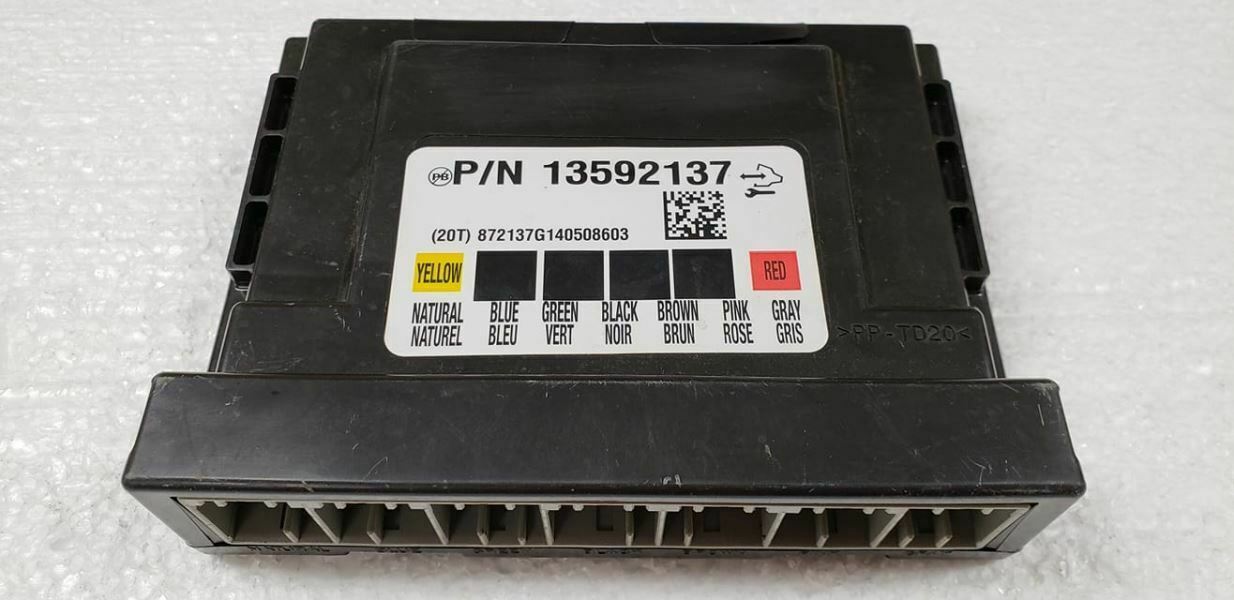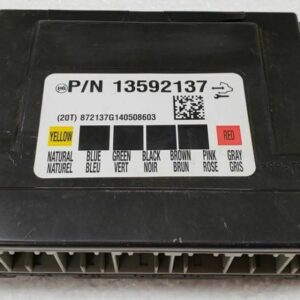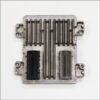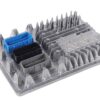Are you battling a storm of bizarre electrical issues in your 2015 Corvette or another compatible GM vehicle? One moment your power windows work, the next they’re dead. The radio might flicker, the security light flashes for no reason, or worse, the car won’t start at all. These aren’t random gremlins; they’re classic signs of a failing Body Control Module (BCM). As the central computer for your vehicle’s comfort and convenience features, when the BCM goes, it takes a lot of functionality with it. I’ve seen it hundreds of times in my shop—a perfectly good engine that won’t crank because the BCM isn’t correctly communicating with the security system.
Forget the hassle and high cost of a dealership visit. We offer a simple, reliable solution: a replacement BCM with our mail-in cloning service. You send us your original module, and we transfer all the critical vehicle-specific data—including VIN, mileage, and key information—to this replacement unit. The result? A module that is truly plug-and-play for your vehicle. No need for expensive factory scan tools or programming appointments. This is the most direct path to restoring your car’s electronic stability and getting back on the road with confidence.
Case Study: A Tricky Diagnosis
A customer brought in a 2015 Sierra 1500 with a complaint that was driving him crazy. The truck would randomly not start, the interior lights would pulse, and the radio would cut out. He’d already replaced the battery and checked the alternator. We scanned the truck and found a slew of U-codes (communication errors) pointing to multiple modules. This is a classic sign that the central hub—the BCM—is failing. Instead of communicating, it was flooding the data bus with garbage information, confusing all the other modules. By replacing the BCM with a pre-cloned unit like this one, we restored clear communication on the network. All the strange symptoms vanished instantly. It’s a fix I’ve performed countless times, saving customers from chasing down phantom electrical issues.
Is Your Vehicle Showing These Symptoms?
- ✔ Power windows, locks, or mirrors working intermittently or not at all.
- ✔ Interior or exterior lights flickering, staying on, or not turning on.
- ✔ The security system light is on, or the alarm goes off randomly.
- ✔ The engine won’t crank or start, even with a good battery (No-Crank/No-Start).
- ✔ Multiple unrelated warning lights appearing on the dashboard.
- ✔ Diagnostic trouble codes (DTCs) related to communication loss, such as U0140, U0155, or other U-codes.
- ✔ Inconsistent operation of the radio, climate control, or other interior accessories.
Your Straightforward Installation Guide
- ✔ Safety First: Always disconnect the negative terminal from your vehicle’s battery before starting any electrical work.
- ✔ Locate the BCM: The location varies by model (see fitment list). Common spots include under the steering column, behind the LH dash panel, or on the firewall. Consult a service manual for your specific vehicle if unsure.
- ✔ Disconnect and Remove: Carefully unplug the electrical connectors from the old BCM. They have locking tabs that must be depressed. Once disconnected, remove the bolts or screws holding the module in place.
- ✔ Install the New Module: Mount your new, pre-programmed BCM in the same location and secure it with the original hardware.
- ✔ Reconnect Everything: Plug the electrical connectors firmly into the new module. You should hear or feel a click. Reconnect the negative battery terminal.
- ✔ Post-Installation Checks: Start the vehicle and verify that all body functions (lights, windows, locks, etc.) are working correctly. Note that some vehicles may require the additional procedures listed below.
Important Post-Installation Steps
While our cloning service makes this a plug-and-play repair, some vehicle systems may require a ‘handshake’ with the new BCM. Please be aware of the following potential procedures:
- Airbag System Sync: If your airbag warning light is illuminated after installation, a ‘Setup SDM Primary Key in BCM’ procedure must be performed using a professional-grade scan tool. This syncs the airbag system with the new BCM.
- Brake Pedal Position Relearn: On some models, a brake pedal position sensor relearn may be needed to ensure correct brake light operation and to prevent issues with the traction control system.
Disclaimer: We are not responsible for any labor costs. Always consult a factory service manual or a qualified technician for vehicle-specific procedures.
Guaranteed Fitment for Your GM Vehicle
This module is a direct replacement for part numbers 13592137, 13506935, 13506936, 13587704, and 13594764. It is verified to fit the following models:
- ATS: 2015, 2016
- Corvette: 2015
- CTS: 2015, 2016
- Escalade / Escalade ESV: 2015
- Impala: 2015-2016 (New Style, VIN 1)
- Sierra 1500 / Denali 1500: 2015
- Sierra 2500 / 3500 / Denali: 2015
- Silverado 1500 / 2500 / 3500: 2015
- Sonic: 2015-2018
- Suburban 1500: 2015
- Tahoe: 2015
- XTS: 2015
- Yukon / Yukon XL 1500: 2015
Frequently Asked Questions
Frequently Asked Questions
How does the mail-in programming service work?
After you purchase, we will contact you with instructions to ship your original BCM to us. Once we receive it, we clone the data to the replacement module and ship it back to you, typically within 1-2 business days. Tracking will be provided.
Do I need to do any programming myself?
No. Our cloning service transfers all necessary data, making the module ready to install in your vehicle without any additional programming. It’s a true plug-and-play solution.
Why is my airbag light on after installing the new 2015 Corvette BCM?
This is normal for some vehicles. The new BCM needs to be electronically introduced to the airbag system (SDM). A technician with a high-level scan tool can perform the ‘Setup SDM Primary Key in BCM’ procedure to resolve this.
Is there a core charge?
No, there is no core charge for this part. You can keep your original module after you receive the programmed replacement from us.
How do I know if my BCM is the problem?
Common signs include multiple, unrelated electrical failures like erratic power windows, locks, lights, and no-start conditions. A professional diagnosis with a scan tool can confirm by checking for communication codes (U-codes) from the BCM.



